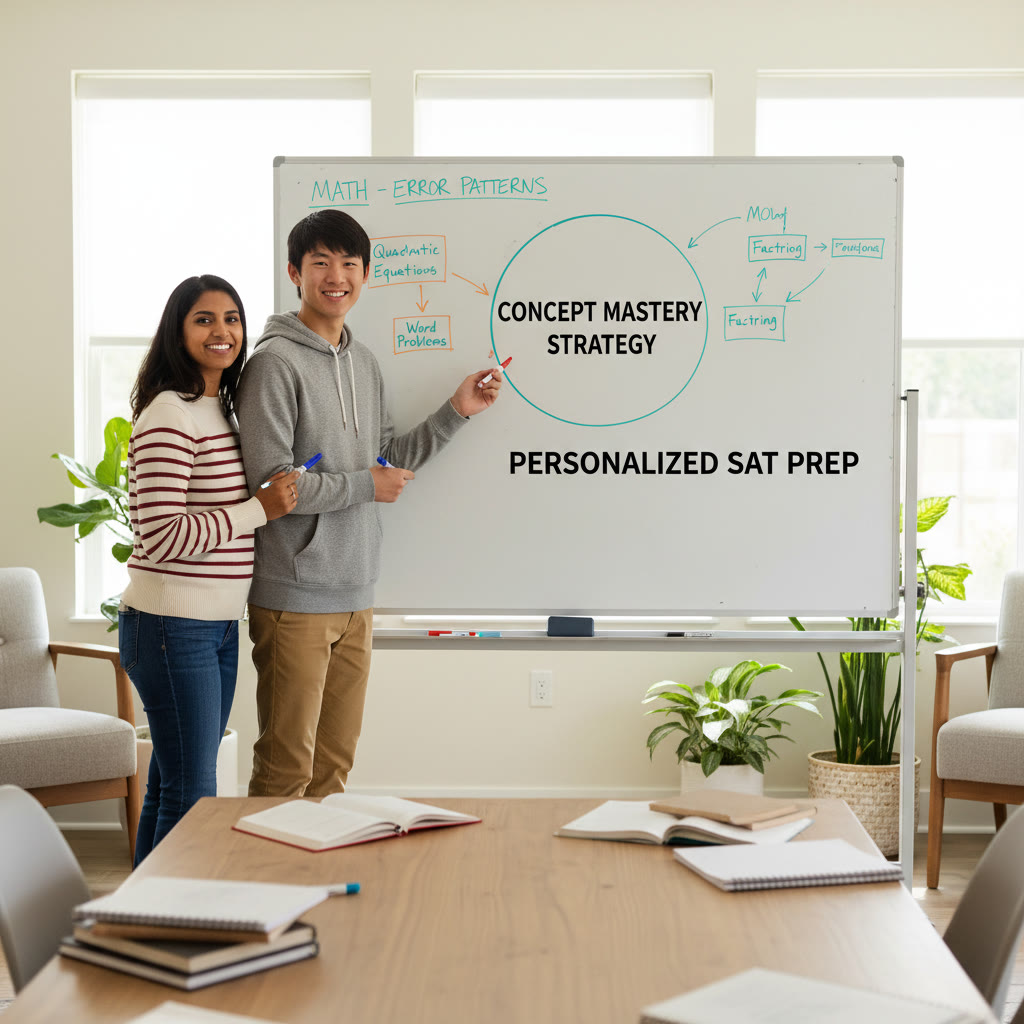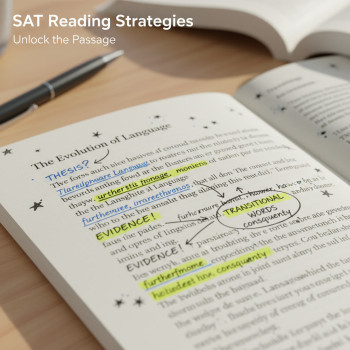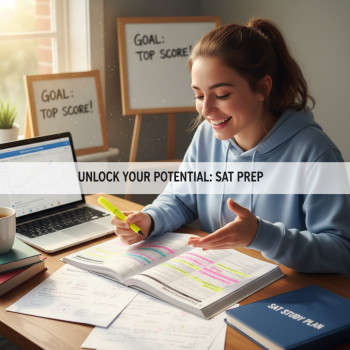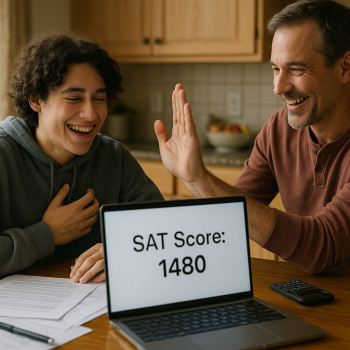The Student Reality of Handling Score Expectations
Walk into any high school cafeteria, classroom, or group chat and you’ll hear the numbers: 1400, 1550, 1200. Scores become shorthand — status markers, hope, and sometimes stress. If you’re preparing for the SAT, you already know the soul-crushing mix of ambition and uncertainty that comes with aiming for a target score. This blog is a conversation: honest, practical, and, yes, hopeful. We’ll talk about why expectations get out of hand, how to set realistic goals, concrete study strategies, and how to stay sane during the process. Along the way I’ll share examples, comparisons, and real-world context so the advice actually sticks.
Why Score Expectations Feel Immovable
Expectations on the SAT feel concrete because people treat scores like fixed properties instead of variables. A 1300 is not a fixed destiny any more than a 1100 is a ceiling you can’t break. Expectations come from three reliable sources:
- Social cues — friends, classmates, or college-admission anecdotes that create pressure to be ‘ahead.’
- Institutional cues — target thresholds for top colleges, scholarship cutoffs, or teacher recommendations.
- Personal ambition — your own internal voice that says, “I have to be in the top percentile to prove myself.”
When these collide, expectations solidify. A casual comment like, “Most people I know got a 1450,” can turn into a headline in your head: “I must get 1450 too.” But most people don’t realize how many students move significantly between practice tests and the actual day. That mobility is where opportunity lies.
The Difference Between Expectation and Goal
Expectation often sounds like, “I should get X,” and carries emotion. A goal says, “I will reach X by doing Y.” Expectation is passive; goal is active. If you’re honest, you’ll recognize the relief that comes from converting a vague expectation into a plan: specific actions, a timeline, and checkpoints.
- Expectation: I should score 1500 because my cousin did.
- Goal: I will reach 1500 by improving my math accuracy by practicing 30 targeted problems per week and taking a full-length test every two weeks.
Real-World Example: Two Students, Two Paths
Meet Mia and Jordan. Both start with a practice SAT score of 1250 and want to get to 1400.
- Mia hears classmates say, “You either get lucky or you’re just not a test person.” She internalizes that opinion, studies irregularly, panics before tests, and sees small, inconsistent score increases. She treats practice tests like a verdict rather than feedback.
- Jordan treats the score as data. He records question types he misses, times himself, and focuses on weaknesses for short, repeated practice sessions. He uses one practice test to guide the next two weeks of work, not to demonize himself. Jordan improves steadily.
The difference isn’t raw talent. It’s the relationship they have with their score expectations. Mia sees the score as a final judgment. Jordan treats it as a progress indicator.
How to Reframe Your Relationship with Scores
Reframing happens through language and structure. Swap “I have to” for “I will try,” and pair that with a simple structure that creates momentum:
- Track what changes your score, not just the number. What sections improve with what habits?
- Celebrate small wins: fewer careless errors, better time management, improved vocabulary retention.
- Build a feedback loop: practice test → error analysis → targeted practice → re-test.
Practical Tools for Managing Expectations
Let’s move from ideas to tools. These are simple, testable actions you can start this week.
1. The Three-Level Goal System
Create three connected goals: baseline, stretch, and aspirational.
- Baseline: Where you realistically expect to be in 6–8 weeks with consistent effort.
- Stretch: A challenging but achievable score if you stay disciplined.
- Aspirational: The dream score, useful for long-term motivation but not a pressure cooker.
Why it helps: multiple tiers prevent all-or-nothing thinking. If you hit your baseline, you’ve moved forward. If you miss, you still have a realistic checkpoint for adjusting strategy.
2. Score-Driven Study Blocks
Break study time into focused blocks centered on your weakest question types. Spend 25–40 minutes per block followed by a short break. Example focus areas: algebra, data interpretation, sentence structure, and reading inference.
3. The Mistake Log
Record every error during practice with three columns: question type, why you missed it, and how you’ll avoid it. Over a month, patterns emerge — and patterns are negotiable.
Data You Can Trust: Score Ranges and Focus Areas
Here’s a practical table connecting score bands with percentiles and recommended focus areas. Use it to decide where to spend your study hours.
| Score Band | Approx. Percentile | Primary Focus |
|---|---|---|
| 600–900 | Below 30th | Foundational grammar, basic algebra, timed practice with pacing |
| 900–1100 | 30th–60th | Consistency, error logging, fundamental reading strategies |
| 1100–1300 | 60th–80th | Advanced algebra, evidence-based reading, passage mapping |
| 1300–1450 | 80th–95th | Complex problem solving, timing strategies, question triage |
| 1450–1600 | 95th and above | High-difficulty practice, accuracy under pressure, elite-level reasoning |
Note: percentiles vary year to year, but these bands give a useful orientation for allocating study time.
Designing a Realistic Study Plan
A plan that looks good on paper but doesn’t match your life will fail quickly. Realistic plans are sustainable. Below is a sample eight-week plan for a student aiming to move from 1200 to about 1350.
| Week | Focus | Weekly Time | Checkpoints |
|---|---|---|---|
| 1–2 | Diagnostic tests; mistake log setup; fundamentals review | 6–8 hours | Full-length test at end of week 2 |
| 3–4 | Targeted math and grammar drills; timed sections | 8–10 hours | Practice sectional scores up 5–10 points |
| 5–6 | Reading strategies; passage mapping; pacing | 8–10 hours | Full-length test at end of week 6 |
| 7–8 | Targeted weak spots; simulation tests; mental conditioning | 10–12 hours | Final full-length practice and strategy polish |
This plan balances skill-building and realistic time commitments. The final weeks add more simulated test experience because score stability comes from repeated, realistic practice.
How Emotion Shapes Performance
If expectations are loudest in your head on test day, your emotional state is the amplifier. Anxiety eats focus and pushes you into error-prone strategies: rushing, second-guessing, or freezing. The good news is emotions are trainable. Practice under realistic conditions — timed blocks, distractions, and fatigue simulation — reduces the novelty of pressure on test day.
Simple Mental Hacks You Can Use
- Breathing reset: take a 60-second breathing cycle when you feel overwhelmed. Slow inhales for 4, hold 4, exhale 6.
- Micro-goals: instead of “finish the test,” aim for “finish this passage” or “finish these five problems without second-guessing.”
- Post-mistake routine: when you get one wrong in practice, spend five minutes on the mistake log and then move on. Don’t let one error expand into catastrophe.
When to Seek Help — and How to Get the Most Out of It
There’s a tipping point where self-study produces diminishing returns. If you’ve plateaued after several cycles of practice-tests and targeted work, or if anxiety consistently undermines your practice performance, it’s time to get help. Personalized tutoring can be transformative because it addresses the two things self-study can’t always fix: misdiagnosed weaknesses and inefficient habits.
Sparkl’s personalized tutoring fits naturally into this conversation. One-on-one guidance helps translate expectation into a tailored plan, expert tutors can pinpoint stubborn question types you misread, and AI-driven insights can quickly surface patterns that take weeks to spot alone. When tutoring is paired with your consistent effort, the results compound: better focus, sharper practice, and fewer wasted hours.
What to Look For in a Tutor
- Diagnostic-first approach: they should start by understanding your data, not insisting on a pre-set curriculum.
- Actionable feedback: every session should leave you with two or three clear actions to practice before the next one.
- Accountability matched to your lifestyle: progress is a series of small wins — a tutor should help you keep those wins in view.
Test-Day Tactics to Keep Expectations in Check
On test day, expectation often hijacks focus. Here are tactical moves to keep it grounded:
- Start with the section you feel most confident about to build early momentum.
- Use answer-elimination before guessing; remember, smart guesses still help your score.
- Have a pre-test ritual: the same breakfast, same warm-up problems, the same calming song during wait time. Rituals reduce cognitive load.
- Keep perspective: a single test is a major event, but not the definition of you. Colleges consider context, essays, recommendations, and growth.
Measuring Progress Without Ruining Motivation
Progress is reassuring when you have the right metrics. Don’t treat raw scores as the only barometer. Consider these alternative metrics:
- Reduced frequency of careless errors.
- Improved sectional pacing (e.g., fewer skipped algebra questions).
- Ability to explain why an answer is correct or incorrect without second-guessing.
Track these alongside practice-test scores. If the metrics trend positively, a plateau on the raw score usually signals that you need targeted high-difficulty practice, not a wholesale change in strategy.
When Expectations Are Not About Scores
Sometimes the pressure you feel isn’t only about college admissions. It might be about proving you can manage something hard, or about family expectations. These layers are real and deserve attention. Talk about them with someone who listens without judgment — a teacher, a counselor, or a tutor who understands the emotional side of preparation. That human connection is part of what makes targeted tutoring, like Sparkl’s personalized approach, effective: it addresses technique and morale together.
Short Checklist for Conversations With Supporters
- Tell them your baseline and your realistic timeline.
- Ask for concrete support (quiet study hours, fewer evening commitments) rather than vague encouragement.
- Share small wins so they can celebrate progress without focusing only on the final score.
Conclusion: Expectation as Fuel, Not Prison
Scores are not immutable labels. They are signals — information you can use. The healthiest relationship with the SAT turns expectation into a tool: a motivator that is calibrated by data, not fear. Use the three-level goal system, keep an error log, practice under realistic conditions, and ask for help when progress stalls. If you choose tutoring, look for a diagnostic-first, feedback-rich approach that respects your life and pace. Sparkl’s personalized tutoring model — mixing expert tutors, one-on-one guidance, tailored study plans, and AI-driven insights — can be the kind of support that turns anxiety into steady improvement when it fits your needs naturally.
At the end of the day, the most reliable predictor of improvement is not an intense cram session but a sustainable plan: deliberate practice, honest reflection, and consistent feedback. Treat the SAT like a project you can iterate on, and you might be surprised at how quickly expectation shifts from a weight on your shoulders to the engine moving you forward.


















No Comments
Leave a comment Cancel